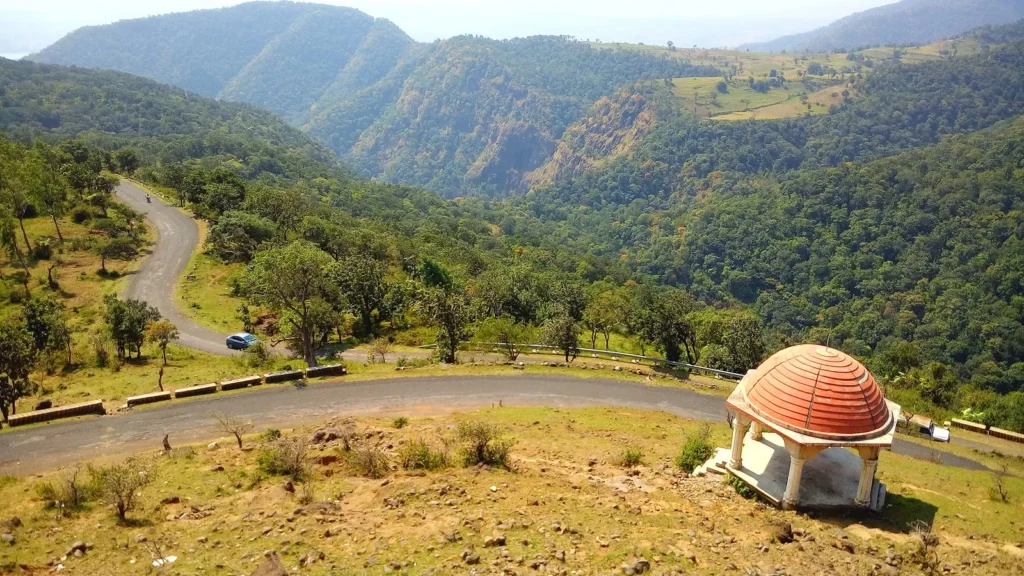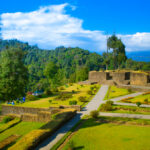Now Reading: Top 4 Best Places to Visit in Akola for History, Spirituality & Nature
-
01
Top 4 Best Places to Visit in Akola for History, Spirituality & Nature

Top 4 Best Places to Visit in Akola for History, Spirituality & Nature
1. Akola Fort

Akola Fort, along with Narnala and Akot Forts, forms a significant part of the fortifications in Akola district. The historical origins of this fort trace back to Akol Singh who built it as a mud fort when Aurangzeb sat on the throne. Akol Singh saw a hare chase a dog while believing this vision to be divine thus leading him to build an enclosing stronghold around the village which would become Akola Fort.
After initial construction as a simple mud fort Akol Singh added granite blocks and limestone alongside mud bricks and clay bricks which he combined with wood and iron together with mortar for greater fortification. The fort combats threats in a strong manner as it displays beautiful lining art on its outer perimeter which demonstrates both security and attractive design. The prominent gateway at the fort known as Dahi Handa Gate contains attractive inscriptions that tell its historical story. The main walls of the fortress contain many observation points that show its vital role in military strategies.
History
In the year 1803 when the Second Anglo-Maratha War took place Arthur Wellesley used Akola Fort as his tactical base. British forces carried out destruction of fort sections in 1870 which resulted in the establishment of its current ruined state. The existing remains of the fort retain their strength which permits present-day visitors to study its historical significance.
Tourists visiting Akola Fort have the additional opportunity to discover:
- Akola residents consider the Rajeshwar Mandir temple as one of the oldest temple structures and a revered religious site with architectural significance.
- Several stone structures from different historical periods exist within the fort complex because successive rulers built them with varying architectural styles.
Visitor Information
- Location: Akola, Maharashtra
- The site is accessible every day with potentially changing hours of operation.
- Entry Fee: NA
2. Ashok Vatika
It is situated at the centre of Akola city, famed among Buddhist and Dalit because pilgrimage place. The serene ambience of the Vatika make it a most sought after place for those who are looking forward to de-stress and overcome the pattern of thoughts and overcome anxiety.
- The key attraction of Ashok Vatika is beautiful, statues of:
- Dr. B. R. Ambedkar – The architect of the Indian Constitution and a key figure in social reform.
- Gautam Siddharth established Buddhism and represents both peace as well as spiritual knowledge.
- Mahatma Jyotirao Phule – A pioneer of education and social reform in India.
- The statues at Ashok Vatika function as representations of wisdom together with equality and justice which welcome site visitors from the entire area.
Easy Accessibility
Ashok Vatika is conveniently located:
- 3 km from Akola railway station (approximately a 12-minute ride via cab or auto-rickshaw)
- Nearest airport: Nagpur, approximately 250 km away
Visit Ashok Vatika
For visitors trekking Akola, Ashok Vatika is an exceptional must go place for all who are mainly attentive to other history, social movements and spirituous stories. From seeking peace, cultural awareness to a tour of discovery, this notable icon is bound to leave an indelible mark.
Visitor Information
- Location: Akola, Maharashtra
- The timings are Open daily (may vary)
- Entry Fee: NA
3. Balapur Fort

During the Mughal era workers designed Balapur Fort with Indo-Islamic architecture that now represents Maharashtra’s cultural heritage since its construction in 1716. The builders intended Balapur Fort to safeguard Akola from enemy forces so it has survived since the Mughal era.
Because of its intelligent engineering Balapur Fort functions perfectly between two rivers without accepting any flood risk. The main fort at Akola contains two more internal forts which extend its historical value and architectural magnificence for tourists to discover.
Historical Background
- The fort originated from Azam Shah who is the son of Mughal Emperor Aurangzeb.
- Construction Started: 1712 AD
- Ismail Khan finished the construction as the Nawab of Amaravati in 1757 AD.
- The fort gained major importance during the regional conflicts in 1720 AD.
Notable Attractions Inside the Fort
- Visitors admire Bala Devi Temple for its Mughal-era elegance which shows through its masterfully designed architectural statues and sophisticated artwork.
- The historical and architectural gem of the mosque contributes to the cultural and religious diversity contained within the fort.
The joint work of the Archaeological Department with Maharashtra Tourism ensured that Balapur Fort could be properly preserved which enables visitors to experience its historical wealth.
Visitor Information
- Location: Balapur, Akola, Maharashtra
- Visitors can access the site during all days yet precise operating hours will vary.
- Entry Fee: NA
4. Raj Rajeshwar Temple
One of the oldest temples in Akola stands as Raj Rajeshwar Temple which people also call Rajeshwar Nagari and it rests within the historic walls of Akola Fort. People from all backgrounds visit this spiritually important Shiva temple because of its historic value.
The temple’s sanctified lingam bears an enchanting historical tale of its broken form. During the time of King Akola Singh his royal wife left the palace under the cover of darkness. The king started to trail his wife after expecting her nighttime activities. At that moment of surveillance she hurried into the Shiva temple where she asked Lord Shiva to help because her husband did not trust her. She made a plea to the divine power for her transformation into a stone form. The story reveals the lingam expressed two parts while she vanished into the divine object to create a notable historical legacy.
The temple attracts numerous devotees toward Lord Shiva because Monday holds religious significance for him.
The temple exists as a holy sacred site that welcomes those who desire divine gifts and spiritual calm.
Visitor Information
Location: Shivaji Nagar, Near Akola Fort, Akola, Maharashtra 444002, India
The temple opens its doors every day (exact operating hours are unspecified).
Entry Fee: NA
related articles : Top 10 Best Places to Visit in Ahmednagar for History, Nature & Spirituality



























